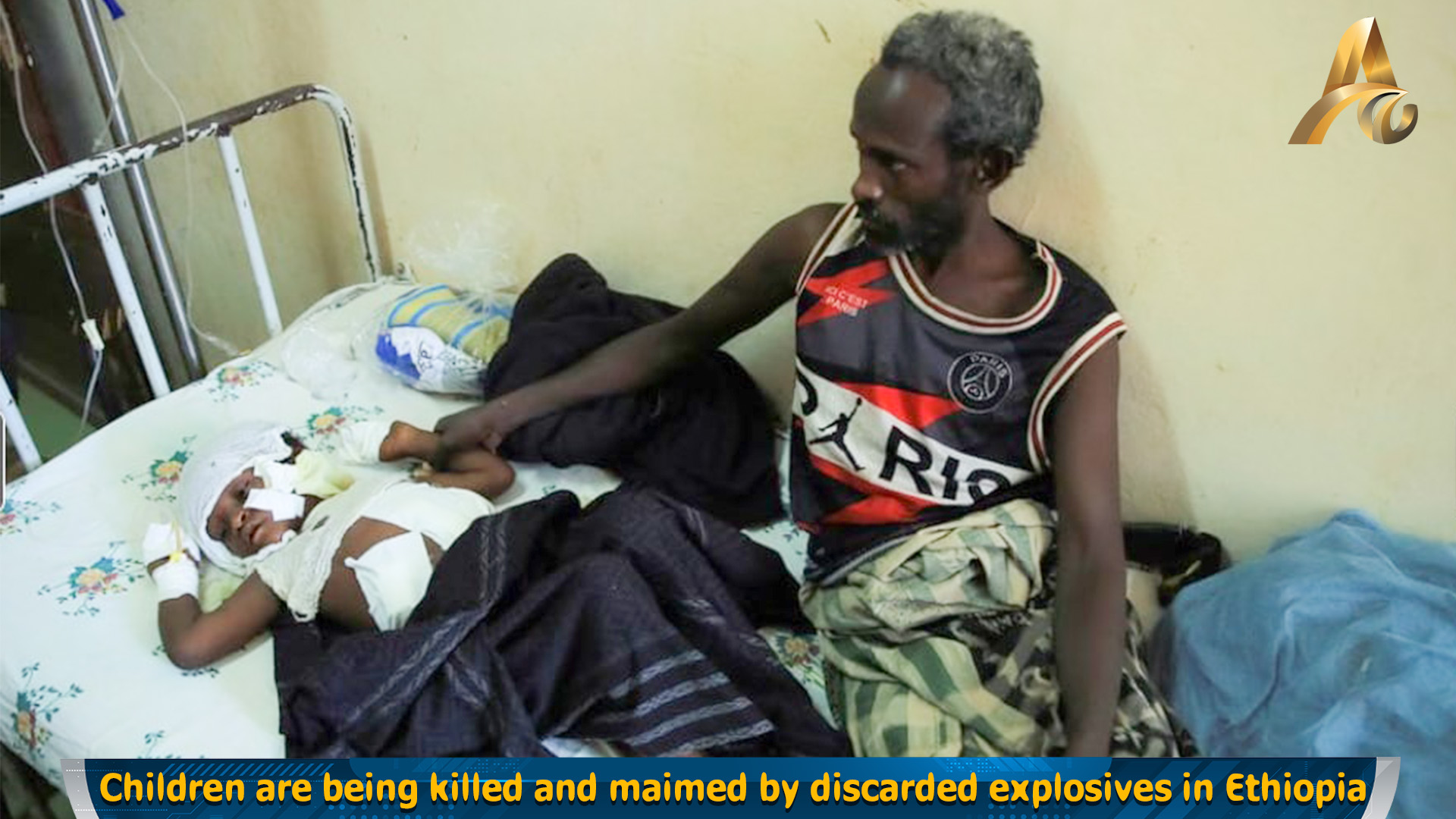INTERNATIONAL: Fifteen-year-old Eysa Mohammed was collecting water near her home in northern Ethiopia's Afar region when an explosion underfoot tore shrapnel into her leg, making her one of a growing number of children maimed by weapons discarded in the country's civil war.
"So much blood was spilling from my right foot," Eysa told a reporter in her family hut in the town of Kasagita. Doctors removed two large pieces of metal from her leg in February but she can no longer walk.
Fighting in northern Ethiopia, which began in November 2020 in the Tigray region and spilled over into Afar and the Amhara region last year, has eased since the end of March. The federal government declared a unilateral ceasefire last month in a war that has killed thousands of people. On April 25, Tigrayan forces announced they would withdraw from Afar.
But discarded explosives have maimed or killed scores of children in Afar even after open combat near Kasagita abated in December, three regional health officials told Reuters.
Adults have also been wounded, but the officials say there are more child victims because they are often not aware of the dangers and handle the strange looking items.
The health officials did not provide an exact total of injuries by unexploded ordnance in Afar. Around a fifth of its health facilities are not functional due to the fighting, according to the U.N. Office for the Coordination of Humanitarian Affairs.
However, between December and late February, the Dubti Referral Hospital, Afar's largest, received about 25 cases per week of injured children from unexploded ordnance or landmines, said Tamer Ibrahim, head nurse for the surgical unit. During a visit in late February, Reuters saw medical records for 22 of the cases, with some attributing injuries to a "bomb" or "explosive," based on patient testimonies.
Six children with amputated limbs lay on dirty beds in the pediatric unit.
Injuries from unexploded ordinance are still happening - a 20-year-old man lost his hand on April 18, Dr. Abdollah Dooran, who runs Kasagita's health center, told Reuters by telephone. He had seen around 50 such injuries since the fighting died down, he said.
Residents said the danger makes them fearful of fetching water and resuming farming activities key to the recovery of northern Ethiopia, where the war has left hundreds of thousands in famine conditions and displaced around two million people, U.N. figures show.
"Unexploded ordnance and abandoned ammunition will continue to obstruct humanitarian activities, hamper agriculture and construction efforts," and prevent safe resettlement, said Mark Hiznay, senior arms researcher at New York-based Human Rights Watch.
Ethiopian Health Minister Lia Tadesse told Reuters she was not aware of the incidents of children injured by unexploded ordnance or mines in Afar or the other regions.
Reuters was unable to establish which weapons were responsible for the injuries, or which side left them.
Patient testimonies are the only way hospital staff can determine what caused the injuries, said Dr. Mohammed Yusuf, the Afar hospital's chief executive.
Some patients have said they picked up grenades. Others said they stepped on landmines, although there is no independent evidence mines have been laid during the conflict.
Getachew Reda, a spokesman for the Tigray People's Liberation Front (TPLF), said Tigrayan forces did not use landmines and tried not to leave behind unexploded ordnance. He did not give details of any clean-up operations.
The head of the federal government's humanitarian aid office and spokesmen for the military did not respond to questions about injuries and deaths from unexploded ordnance or landmines.
War erupted in the Tigray region 17 months ago between Prime Minister Abiy Ahmed's government and Tigrayan forces commanded by leaders of the TPLF, the party that controls most of the region and used to run the federal government.
The TPLF accuses Abiy of trying to centralise power at the expense of Ethiopia's ethnically based regions. Abiy's government says the TPLF is trying to take back control of the country.
Reuters was unable to get official figures on children injured by unexploded ordinance in the Tigray region because authorities there did not respond to requests for comment.
A doctor at Ayder Referral Hospital in Mekelle, Tigray's capital, said that by the end of last year his hospital alone had received 139 cases of children seriously injured by explosives as a result of the war.
The doctor, who asked not to be named, shared pictures of eight children with burns and large bleeding wounds on their legs, hands and torsos, and fingers and toes blown off. Reuters was unable to independently verify the images.
Gizachew Muluneh, spokesman for the regional government of the Amhara region, where fighting has also been fierce, said 3,320 children there had been injured in the war, but did not provide a breakdown of what caused the injuries.
The TPLF invaded Afar last July, saying it was seeking to break a stranglehold that prevented food aid from entering Tigray and to capture a strategic highway leading to Djibouti, the Horn of Africa's main port.
Ethiopian forces and the TPLF fought in Kasagita, which lies on along an important supply route into the capital Addis Ababa, for 28 days in November and early December. When Reuters visited in February, burned-out houses dotted the landscape along with abandoned green boxes of ammunition. Residents of the town said the fighting killed 38 civilians, a number Reuters was unable to independently confirm.
The first victim of unexploded ordnance in Kasagita was 2-year-old Saed Noore, who was killed on Feb. 16 while playing outside his house, three residents said.
"His body was completely carbonized. He died shortly after," said Dr. Abdollah, who runs the town's clinic.
In the following five days, four other children between the ages of 4 and 10 were brought to Abdollah's clinic with injuries from unexploded ordnance, he said. Ten severe cases were sent to Dubti hospital, 140 km (87 miles) away. Three died there.
One, five-year-old Dawud Ali, was sent to Dubti after his stomach was blown open when he and a friend mistook a grenade for a toy, Abdollah said, citing the parents, whom Reuters was unable to interview. He died three days later.
A government offensive in December pushed the Tigrayan forces back from Afar for a couple weeks. But Tigrayan forces returned and occupied six districts in parts of Afar further to the north. Fighting flared sporadically until the government ceasefire.
"There are explosives everywhere, and when people begin their daily work, accidents are happening," said Tamer, the nurse in Dubti. "We are in a very difficult situation."






















